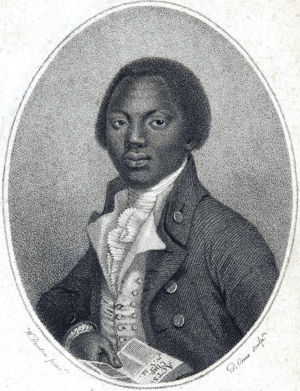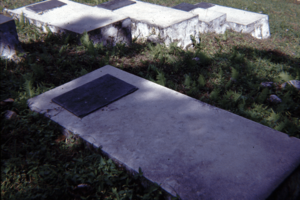Igbo people in the Atlantic slave trade facts for kids
The Igbo are a large group of people from a region in West Africa called Igboland. This area is also known as the Bight of Biafra (or Bight of Bonny). Sadly, many Igbo people were captured and forced into slavery during the terrible Atlantic slave trade. About 14.6% of all enslaved people taken from Africa between 1650 and 1900 came from the Bight of Biafra.
The main ports where slaves were sold were in Bonny and Calabar. Many Igbo people were kidnapped during raids on their villages. Their sad journey often began at an ancient place called the Cave Temple in the Arochukwu Kingdom.
At that time, the three main Igbo kingdoms had similar cultures and religions. However, they treated slavery very differently. The Nri Kingdom and the Independent Igbo States did not practice slavery. In fact, slaves from nearby lands would often escape to these kingdoms to find freedom.
The Arochukwu Kingdom had a system that was different from the harsh chattel slavery in the Americas. It was more like a type of service where people worked to pay off debts or for a set time. But as Europeans started to come into Igbo lands, the kingdoms wanted weapons to protect themselves. To get these European goods, Arochukwu began to raid villages in other Igbo areas, especially those further inland.
People were captured no matter if they were men, women, old, or young. They could have been farmers, important leaders, or even people who had committed small crimes. These captured people were then sold to European slave traders on the coast.
Another way people became enslaved was through a special oracle at the Cave Temple. All Igbo people used a form of fortune-telling called Afa. But the Arochukwu Kingdom was special because it had a powerful oracle who helped the king make decisions. If someone committed a crime, owed money, or did something considered very wrong, they would go to the cave to face the oracle. The oracle, who was also influenced by the European slave traders, would often sentence these people to slavery, even for small mistakes. The victim would be told to walk deeper into the cave, supposedly to be "eaten" by spirits. But in reality, they were led to another exit and put onto a boat. This boat would take them to a slave ship heading to the Americas.
Contents
Igbo People Taken Overseas
It's believed that about 14.6% of all enslaved Africans taken across the Atlantic by European slave ships were Igbo. Most of these Igbo people were sent to Virginia and Maryland in America.
Where Igbo People Were Sent
Many Igbo people were sent to different places in the Americas. For example, records show that in 1813, there were 2,863 Igbo people in Trinidad and Tobago. In 1815, 894 were in Saint Lucia. In 1817, 440 were in Saint Kitts and Nevis. And in 1819, 111 were in Guyana.
Igbo in Barbados
Many Igbo people were taken to Barbados. Olaudah Equiano, a well-known Igbo writer who fought against slavery, was brought to Barbados after being kidnapped from his home near the Bight of Biafra. From Barbados, he was quickly sent to Virginia. Between 1751 and 1775, about 44% of the 90,000 Africans arriving in Barbados came from the Bight of Biafra. This means most of them were Igbo. The connection between Barbados and the Bight of Biafra started in the mid-1600s.
Igbo in Haiti
Haiti also received many Igbo slaves. Even today, there is a Creole saying, Nou se Igbo, which means "We are Igbos." Some parts of Haitian culture show Igbo influences. For example, some loa (spirits or deities) in the Vodun religion were created by Igbo people.
Igbo in Jamaica
In the 1700s, Bonny and Calabar became major ports for sending enslaved West Africans to Jamaica. Slave ships from Bristol and Liverpool in England mainly used these ports to supply slaves to British colonies in the Americas. Most Igbo slaves arrived in Jamaica later than other African groups, especially after the 1750s.
More enslaved people from the Bight of Biafra were brought to the Americas, particularly British colonies, in the 1700s. The largest number of these forced journeys happened between 1790 and 1807. Because of this, Jamaica became the second most common place for slaves from the Bight of Biafra, after Virginia. Since Igbo people made up most of the slaves from the Bight, they became a large group in Jamaica in the 1700s and 1800s.



